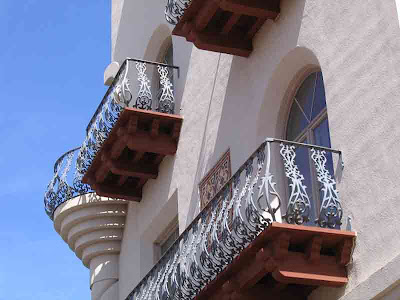Tuesday, February 27, 2007
St. Augustine Rocks! (with coquina shells, that is)






St. Augustine is lovely and old, really old. The city was settled in 1565, one year after the birth of Shakespeare, which happens to be one year after the death of Michelangelo. Its colorful history is actually the result of its strategic location near the Gulf Stream, first used by Spanish treasure fleets carrying their treasures to and from the Caribbean, and later by other European explorers. The Spanish/Moorish influence is very still much visible throughout the city. Then in the 1880s, Henry Flagler started developing the area as a luxurious winter resort. His sumptuous Alcazar hotel was later converted to the Lightner Museum. We oohed and ahhed at the diverse collection of stuff – antiques, shells, musical instruments, glass, and other decorative arts. His huge Ponce de Leon Hotel, which featured a rotunda, turret, and Tiffany glass windows, is now the impressive Flagler College. His architecturally interesting Presbyterian and Methodist churches still stand also.
A trolley tour took us to all these lovely, historic spots (and many of the purely touristy spots such as Ponce de Leon’s Fountain of Youth). We also did a fair amount of walking, along with a million other tourists out for the weekend. St. Augustine is definitely a must-stop along the Great Loop route.
